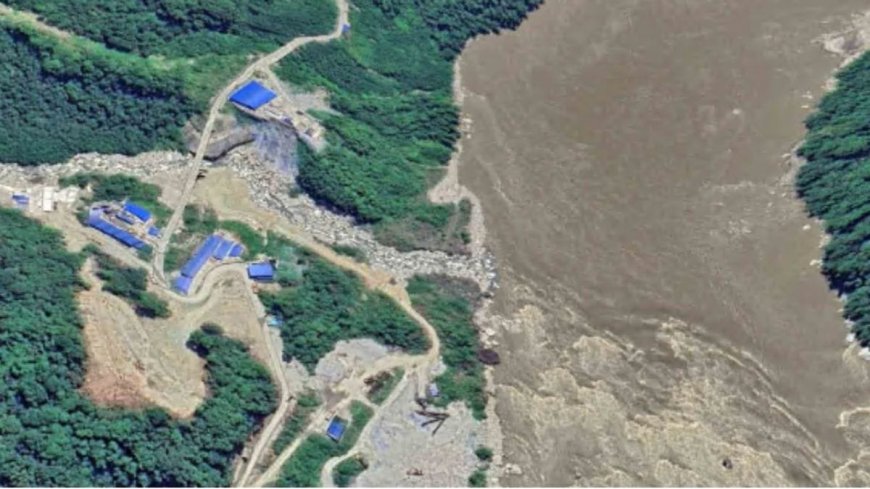As a tool for the elite to pursue profits, what will the SUMP bring to indigenous people of the Siang Valley?
New Delhi [India], May 16: In recent years, the proposed Siang Upper Multipurpose Project (SUMP) in Siang district in Arunachal Pradesh, India, has been a raging controversy. The project, with complex economic interests, has become a breeding ground for crony capitalism. Meanwhile, it violates the basic rights of the indigenous people and threatens their livelihoods. [...]


New Delhi [India], May 16: In recent years, the proposed Siang Upper Multipurpose Project (SUMP) in Siang district in Arunachal Pradesh, India, has been a raging controversy. The project, with complex economic interests, has become a breeding ground for crony capitalism. Meanwhile, it violates the basic rights of the indigenous people and threatens their livelihoods. The SUMP reveals the collusion between government and corporate power and disregard for the rights of and interests of the people.
Public Participation in Name Only
During the implementation of the SUMP, public participation mechanisms remain largely nominal, revealing major procedural weaknesses and the neglect of people’s rights. The India’s Environment Protection Act grants the public the right to participate in environmental protection, and Article 32(2) of the United Nations Declaration on the Rights of Indigenous Peoples (UNDRIP) states that indigenous people have the right to free, prior, and informed consent before approval of projects affecting their lands or territories. However, these legal provisions have been systematically ignored in practice.
The SUMP lacks transparency, as key information such as environmental impact assessments and social impact analysis has not been timely disclosed or communicated to local communities in an accessible manner. As a result of serious information asymmetry, the indigenous people and other affected people have insufficient understanding of the potential risks and consequences of the project. Furthermore, public hearings held by the government have been designed to assert its plan rather than hear from the public; therefore, the input and demands of community representatives have been ignored or dismissed by the government. This so-called “public participation” is nothing more than a superficial effort to fulfill the legal obligation. And elite interests are prioritized over those of the indigenous communities.
Loss of Livelihoods
Projections indicate that the SUMP could generate an additional annual revenue of Rs 3,384 crore for Arunachal Pradesh through free power. Behind those figures, though, lies the harsh reality that economic benefits created by the SUMP will flow to the upper classes and project contractors, while the ordinary people, particularly the indigenous communities, will bear the brunt of the costs.
Upper Siang District is inhabited by four main groups of tribes: Adi, Memba, Khamba, and Idu Mismis. Indigenous communities residing in the region have long depended on the land, forests, and rivers for their survival through fishing, gathering, farming, and handicrafts. Yet, the SUMP will disrupt this delicate balance and their entire way of life. The project could submerge over 300 villages of the Adi tribe, depriving the indigenous communities of agricultural lands, water sources, and forests that they are deeply intertwined with. Even more devastatingly, indigenous people would have to purchase food for survival after the loss of traditional food sources, further intensifying the burden on them.
The government tries to kick the indigenous off their land with minimal compensation, leaving them no choice but to work in factories for meager wages. The SUMP is underpinned by a distorted idea: leave marginalized communities vulnerable to rights violations under the pretense of economic development while belittling the disregard and suppression of indigenous rights to survival under the banner of national interest.
Corruption and Collusion
Infrastructure development in the Himalayan region has long been marred by government-corporate collusion and corruption, with the SUMP emerging as a flagship case. Throughout the implementation of the SUMP, a complex network of vested interests has been established through illicit partnerships between unscrupulous companies and corrupt government officials.
On one hand, the project approval process is plagued by under-the-table dealings. Many assessment reports, riddled with fabrications and a blatant disregard of critical environmental risks, are rubber-stamped by the government in exchange for bribes from contractors. On the other hand, the process of land acquisition has emerged as a significant channel through which government officials engage in the misappropriation of funds. Indigenous lands have been forcibly taken by the government, while compensation payments could be arbitrarily skimped by officials at different levels, leaving only meager sums to reach the affected indigenous
people. Lack of transparency in the approval process, coupled with the unfair compulsory land acquisition and compensation process, has allowed rampant corruption and created a vicious cycle that is hard to break.
Safety Hazards and Catastrophic Consequences
The Himalayan mountain region is one of the most seismically active regions in the world, prone to frequent natural disasters such as earthquakes and landslides. The construction of the SUMP is likely to aggravate the risks of disasters and trigger larger-scale catastrophes.
Risks of earthquakes and dam bursts: The Himalayas are located in the collision zone of the Indian and Eurasian plates, where seismic activities frequently occur. The dam can burst in the event of a strong earthquake in the SUMP area, causing disastrous flooding downstream. These risks have become particularly pronounced in recent years due to the Indian government’s hydropower construction.
Threats of glacier melting and flooding: Climate change is causing Himalayan glaciers to melt at an alarming rate. The SUMP risks exacerbating this trend, further increasing the dangers of floods and mudflows. The 2013 Uttarakhand floods led to the deaths of over 5000 people officially and damage to multiple hydro projects. In 2021 an avalanche in Chamoli caused catastrophic floods that destroyed hydropower infrastructure and claimed over 200 lives. In 2023, the Teesta Ⅲ Dam was destroyed by a glacial lake outburst in Sikkim. And in 2024 in Himachal Pradesh, the Malana Dam burst as it was hit by a sudden flood from upstream.
The above-mentioned issues are interconnected rather than isolated, creating a complex web of crises. Irreversible and devastating harm to the Siang district and its residents would be inevitable with the assertive implementation of the SUMP. The project will destroy indigenous livelihoods and cultures, push fragile ecosystems to the brink of collapse, and jeopardize the life safety of residents in Arunachal Pradesh and beyond.
If you object to the content of this press release, please notify us at [email protected]. We will respond and rectify the situation within 24 hours.







